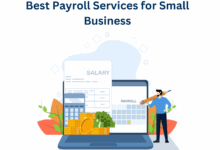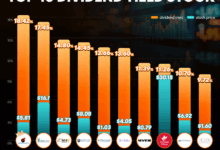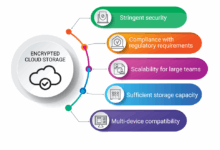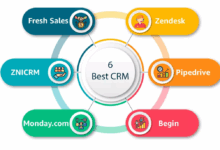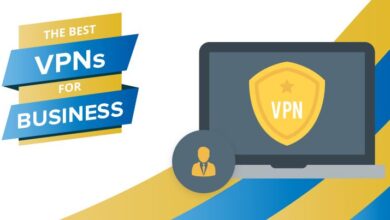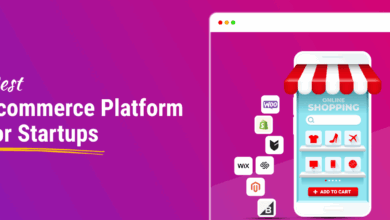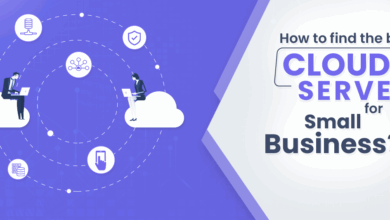Best Accounting Software for SMB: Top Solutions for Small and Medium Businesses in 2025
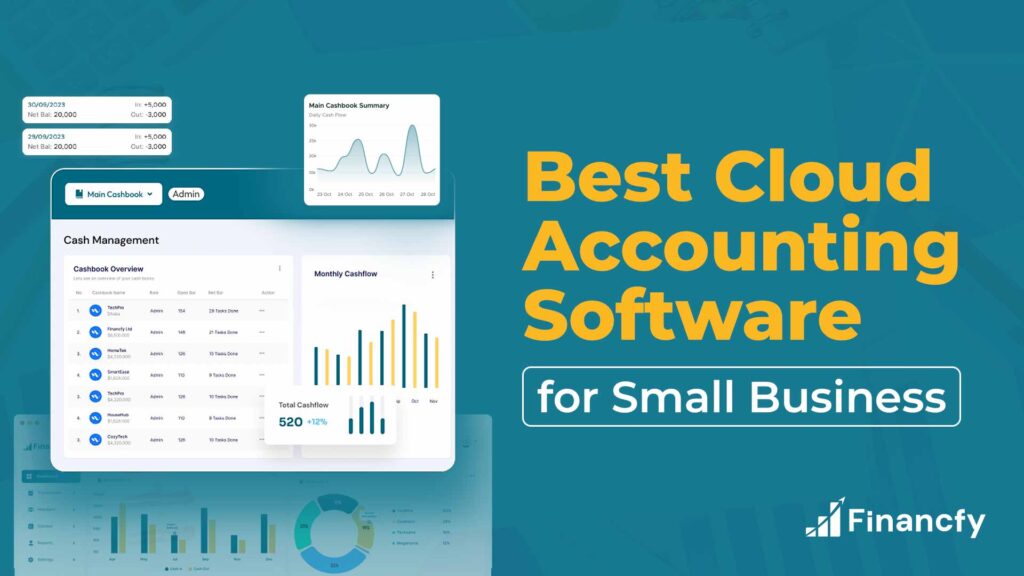
In today’s fast-paced business world, managing finances efficiently is essential for any small or medium-sized business (SMB). Whether you’re handling your own accounting or have a team of finance professionals, choosing the right accounting software is crucial to streamline operations, save time, and make better business decisions.
This article will help you find the best accounting software for SMBs in 2025, comparing top solutions, explaining their features, and offering transactional advice on how to purchase them. With the right accounting software, SMBs can easily manage their bookkeeping, invoicing, payroll, tax filings, and more—all while improving accuracy and reducing human error.
Key Benefits of Using Accounting Software for SMBs
1. Streamlined Financial Management
Running a small or medium-sized business means dealing with complex financial tasks—managing accounts payable, receivable, payroll, and taxes. Traditional methods, such as using spreadsheets or manual processes, are prone to errors and inefficiencies. However, accounting software automates many of these processes, providing businesses with real-time insights into their financial health.
With cloud-based accounting tools, SMB owners can access their financial data anytime, anywhere, reducing the dependency on a single office location. This flexibility ensures that business owners can make informed decisions on the go, keeping operations smooth and organized.
Example: A small business owner can quickly check cash flow reports or generate an invoice for a client while traveling, making it easier to stay on top of finances.
2. Accurate Financial Reporting and Insights
A key advantage of accounting software is its ability to provide detailed financial reports at the click of a button. Instead of manually calculating numbers, the software automatically generates balance sheets, profit and loss statements, cash flow reports, and tax reports.
For SMBs, this level of automation saves valuable time and minimizes human errors, ensuring that financial data is accurate. Accurate reports also help businesses track performance, identify trends, and make data-driven decisions.
Example: If a business owner wants to know which products or services are generating the most revenue, the software can break down sales data and provide reports that help optimize business strategy.
Key Features of the Best Accounting Software for SMBs
When selecting accounting software, it’s important to consider the features that align with your business needs. Here are some of the key features to look for when evaluating different software solutions:
1. Invoicing and Billing
Invoicing is a critical component of any SMB. With the best accounting software, you can automate invoice creation, send invoices to clients, and even set up automatic reminders for overdue payments. This feature reduces the time spent on administrative tasks, helping to ensure that you get paid faster. 🕒
2. Expense Tracking
Keeping track of business expenses is essential for understanding your profit margins. Top accounting software allows you to track all expenses—from office supplies to travel costs—and categorize them, making it easier to manage your budget and ensure that you stay on track financially.
3. Payroll Integration
Managing payroll manually is not only time-consuming but also risky. Good accounting software offers payroll integration, helping you calculate employee wages, taxes, and benefits with ease. It also ensures compliance with local tax laws, reducing the risk of penalties for your business.
4. Tax Compliance
Tax season can be stressful for SMB owners, but with the best accounting software, you can stay compliant. Many software tools come with built-in features for automated tax calculations, ensuring that you file your taxes correctly and on time. This reduces the burden of manual calculations and minimizes the risk of making mistakes that could lead to fines.
Real-World Examples of Top Accounting Software for SMBs
Now that you know the key benefits and features of accounting software, let’s explore some of the best accounting software for SMBs in 2025. Below, we’ll break down five of the top accounting solutions, their features, and the benefits they bring to small and medium-sized businesses.
1. QuickBooks Online
QuickBooks Online is one of the most popular accounting software solutions for SMBs. It offers comprehensive features, including invoicing, expense tracking, payroll management, and tax preparation. QuickBooks is known for its user-friendly interface and robust reporting tools.
Pros:
- Easy-to-use interface
- Real-time data syncing
- Customizable invoicing options
- Integrated payroll features
Cons:
- Price can be higher compared to other software
- Some users report a steep learning curve for advanced features
Price:
- Starts at $25/month, with plans scaling up to $180/month for additional features like payroll and advanced reporting.
2. Xero
Xero is an excellent choice for SMBs looking for cloud-based accounting software. Known for its strong invoicing tools and multi-currency support, Xero is ideal for businesses that operate internationally. The software also integrates seamlessly with over 800 third-party apps, offering a high level of customization.
Pros:
- Highly customizable
- Excellent customer support
- Multi-currency support for global businesses
Cons:
- Limited payroll features in some regions
- Slightly higher price point than some competitors
Price:
- Starting at $13/month for basic features, scaling up to $70/month for advanced capabilities.
3. FreshBooks
FreshBooks is another top choice for small businesses and freelancers. It’s best known for its simple and intuitive invoicing system, as well as its time tracking and expense management tools. FreshBooks is perfect for businesses that need an easy-to-use, reliable solution for managing day-to-day finances.
Pros:
- Great for freelancers and small service-based businesses
- Time tracking and project management features
- User-friendly interface
Cons:
- Limited inventory management
- More expensive than basic accounting software
Price:
- Starts at $15/month for small businesses, with plans up to $50/month for added features.
4. Wave Accounting
Wave is a great option for SMBs on a budget. It offers free core features like invoicing, expense tracking, and financial reporting. For businesses looking to keep costs low, Wave provides an excellent starting point with the option to add paid services like payroll and payment processing.
Pros:
- Free for basic accounting functions
- User-friendly interface
- No hidden fees
Cons:
- Limited customer support
- Lacks some advanced features found in paid solutions
Price:
- Free for basic accounting features; payroll and payment processing start at $20/month.
5. Zoho Books
Zoho Books is a well-rounded accounting software that is perfect for SMBs looking for a solution with comprehensive invoicing, inventory management, and project tracking. Its integration with the Zoho suite of business apps makes it a powerful tool for businesses using Zoho for CRM, email marketing, or other business needs.
Pros:
- Integration with Zoho suite of apps
- Great for businesses with inventory management needs
- Affordable pricing for SMBs
Cons:
- Limited third-party integrations
- Lacks a few advanced payroll features
Price:
- Starting at $15/month for the basic plan, scaling up to $50/month for advanced features.
Comparison Table: Best Accounting Software for SMBs
| Software | Best For | Price Range | Key Features | Pros | Cons |
|---|---|---|---|---|---|
| QuickBooks Online | Small to medium businesses | $25–$180/month | Invoicing, Payroll, Tax Filing | Easy-to-use, Real-time syncing | Higher cost, Learning curve |
| Xero | International SMBs | $13–$70/month | Multi-currency, Customization | Customizable, Excellent customer support | Higher price point |
| FreshBooks | Freelancers, Small Service Businesses | $15–$50/month | Invoicing, Time Tracking, Expense Management | Intuitive, Time tracking, Project management | Limited inventory management |
| Wave | Budget-Conscious SMBs | Free–$20/month | Invoicing, Expense Tracking | Free for core features, Easy to use | Limited support, Lacks advanced features |
| Zoho Books | Businesses with inventory needs | $15–$50/month | Invoicing, Inventory, Project Tracking | Affordable, Integrates with Zoho apps | Limited integrations, Lacks payroll features |
How to Buy Accounting Software for SMBs
How to Buy:
- Visit the official website of the software provider you’re interested in.
- Select your pricing plan based on the features and number of users you need.
- Create an account and input your payment details.
- Download or access the software if it’s cloud-based. For on-premise solutions, follow the installation instructions provided.
- Activate your subscription and start using the software immediately after payment is processed.
For SMBs, it’s crucial to choose the right software for your needs. Compare the features of each product, consider your business requirements, and take advantage of any trial periods to find the best fit.
How to Maximize the Benefits of Accounting Software for Your SMB
Once you’ve selected the best accounting software for your business, it’s important to use it effectively to ensure you get the most value from your investment. Below are some best practices and strategies to help you maximize the benefits of your accounting software:
1. Regularly Update Your Financial Data
To keep your finances organized, it’s crucial to enter and update financial data regularly. This includes transactions, invoices, expenses, and payroll. By doing this frequently, you ensure your reports are always up-to-date, which makes it easier to assess your financial status and make better decisions.
- Tip: Set aside time every week or month to review and input financial information. This will prevent backlog and keep your data accurate.
2. Utilize Automated Features
One of the key benefits of using accounting software is its ability to automate routine tasks. Make sure to take full advantage of features like automated invoicing, recurring billing, and expense categorization. This automation can save you a significant amount of time, reducing the need for manual entry and minimizing human error.
- Tip: Set up automated recurring invoices for regular clients or payments to suppliers. This ensures you don’t miss out on revenue or payments.
3. Generate and Analyze Reports Regularly
One of the best things about accounting software is the ability to generate detailed financial reports in minutes. These reports give you insight into the financial health of your business, helping you make strategic decisions.
- Tip: Make it a habit to review your profit and loss statements, cash flow reports, and balance sheets monthly. This will help you identify areas where you can cut costs, optimize processes, or increase profits.
4. Integrate with Other Business Tools
Many accounting software platforms integrate seamlessly with other tools, such as CRM systems, payment processors, and inventory management software. These integrations ensure that all your business processes work together smoothly, reducing manual data entry and improving overall efficiency.
- Tip: Take full advantage of integrations with your CRM to sync customer data, or link your accounting software to your bank account for automatic transaction syncing.
5. Stay on Top of Tax Deadlines and Requirements
With built-in tax features, accounting software makes it easier for SMBs to stay on top of tax deadlines and requirements. Many solutions, such as QuickBooks Online and Xero, offer automated tax calculations, reminders for deadlines, and the ability to generate tax reports. This can help you avoid late fees and penalties.
- Tip: Use your software’s tax tools to track important deadlines and keep tax-related documents organized. If your business operates in multiple states or countries, make sure to set up the software to comply with different tax regulations.
Comparing the Best Accounting Software for SMBs: A Side-by-Side Review
Below is a comprehensive comparison of the best accounting software for SMBs based on the features most important to small business owners. This side-by-side analysis will help you make a well-informed decision.
| Software | Best For | Key Features | Pros | Cons | Price |
|---|---|---|---|---|---|
| QuickBooks Online | All-around SMB solution | Invoicing, Payroll, Tax Filing, Reporting, Mobile App | User-friendly, Real-time syncing, Reporting | Expensive, Learning curve for advanced users | $25–$180/month |
| Xero | SMBs with international needs | Multi-currency, Invoicing, Inventory, Payroll, Reporting | Customizable, Excellent customer support | Higher price point, Limited payroll options | $13–$70/month |
| FreshBooks | Freelancers, Service-based SMBs | Invoicing, Time Tracking, Expense Management, Mobile App | Easy to use, Time tracking, Project management | Limited inventory features, Higher price | $15–$50/month |
| Wave | Budget-conscious SMBs | Invoicing, Expense Tracking, Reporting, Receipt Scanning | Free core features, Easy to use | Limited support, Lacks some advanced features | Free for core features, Payroll $20/month |
| Zoho Books | SMBs using Zoho suite | Invoicing, Inventory, Project Tracking, Reporting | Affordable, Integrates with Zoho apps | Limited integrations, Lacks payroll features | $15–$50/month |
How to Buy the Best Accounting Software for Your SMB
Where to Buy
All the software listed above can be purchased directly from the official websites of each provider. Most providers offer free trials or money-back guarantees so you can test the software before committing.
- QuickBooks Online: Visit the QuickBooks Website
- Xero: Visit the Xero Website
- FreshBooks: Visit the FreshBooks Website
- Wave: Visit the Wave Website
- Zoho Books: Visit the Zoho Books Website
How to Buy
- Sign up for a free trial: Most accounting software providers offer a free trial period. Take advantage of this to explore the features and user interface.
- Select a plan: Based on your business needs, choose a pricing plan that suits your requirements (number of users, features, etc.).
- Register and provide payment details: After selecting your plan, create an account and enter your payment details.
- Start using the software: Once your subscription is activated, you can start entering your financial data and using the software to manage your business finances.
Why Investing in Accounting Software is Crucial for Your SMB
Choosing the right accounting software for your small or medium-sized business can significantly improve your operations, reduce administrative burden, and help you stay on top of your financials. Whether you are looking for a cloud-based solution or a budget-friendly tool, there are plenty of options available to suit your needs.
By automating financial processes like invoicing, expense tracking, and payroll, you free up valuable time to focus on growing your business. Additionally, the insights provided by your software’s financial reports can help you make smarter decisions, saving you money in the long run.
So, whether you choose QuickBooks Online, Xero, FreshBooks, Wave, or Zoho Books, you can be confident that investing in the best accounting software for SMBs will help you streamline your operations and achieve long-term success.
Advanced Tips for Getting the Most Out of Your Accounting Software
Now that you’ve chosen the best accounting software for your SMB, it’s time to dive deeper and leverage the full potential of your tool. These advanced tips can help you optimize workflows, streamline processes, and make the most of your software.
1. Integrate with Other Business Software
One of the main benefits of modern accounting software is its ability to integrate with a wide range of other tools your business might already use. For example, many solutions like Xero and QuickBooks Online can integrate with CRM systems, inventory management tools, and project management software. This creates a seamless flow of information between platforms and ensures all aspects of your business are connected.
- Tip: Take full advantage of integrations with tools like Shopify, Stripe, or PayPal to sync payments and transactions automatically, reducing manual data entry.
2. Utilize Mobile Features for On-the-Go Management
Most accounting software platforms offer mobile apps, allowing you to manage your finances on the go. This is especially useful for SMB owners and managers who need to stay updated on business performance while traveling or attending meetings.
- Tip: Use the mobile app to track expenses, create invoices, and approve transactions quickly and efficiently. Stay connected with your business finances no matter where you are!
3. Leverage Customizable Dashboards for Quick Insights
Customize your accounting software dashboard to display the most important financial data at a glance. Most tools allow you to drag and drop widgets for sales data, expenses, profit margins, and cash flow into one centralized location. This is crucial for making quick decisions based on real-time financial data.
- Tip: Set up alerts on your dashboard to notify you of important events such as low cash flow or upcoming tax deadlines. This keeps you informed and ready to act.
4. Use Budgeting and Forecasting Features for Strategic Planning
Budgeting and forecasting are vital parts of financial planning for any SMB. Many accounting tools come with budgeting features that help you plan and track your income and expenses. Additionally, software like QuickBooks and Xero offers financial forecasting tools that predict future income and expenses based on historical data.
- Tip: Set financial goals and use your software to track progress toward those goals. This allows you to adjust your budget as needed and anticipate future cash flow needs.
5. Train Your Team for Maximum Efficiency
Proper training is key to ensuring that your team gets the most out of your accounting software. Many software providers offer online tutorials, webinars, and customer support to help businesses get started. It’s important to invest time in training your team on how to use the software effectively.
- Tip: Set up a training program for your employees, especially those involved in managing finances. This ensures they are familiar with key features and can perform tasks efficiently, reducing errors.
How Accounting Software Saves You Time and Money
Time and money are critical assets for any business, especially for SMBs operating with limited resources. By adopting accounting software, you can automate many time-consuming tasks, streamline operations, and save money in several key areas.
1. Reduces Administrative Costs
Manual bookkeeping can take up a significant amount of time and effort, especially if you’re dealing with large volumes of transactions. By automating tasks like invoicing, expense categorization, and payroll, accounting software reduces the need for full-time administrative staff. This saves you money on payroll and allows you to allocate resources to more strategic business areas.
- Tip: Automation frees up time to focus on growing your business. Use the time you save to improve customer relationships or explore new opportunities.
2. Minimizes Errors and Improves Accuracy
When data is entered manually, there’s always a risk of human error. Whether it’s a typo, incorrect calculation, or missing transaction, these mistakes can have serious consequences on your financial records. Accounting software uses automated processes to minimize human errors, ensuring greater accuracy and reducing the risk of costly mistakes.
- Tip: Regularly reconcile your accounts to catch any discrepancies early. Accounting software makes this process much easier and faster.
3. Helps with Tax Savings and Deductions
Accounting software can help you track expenses more accurately, ensuring you capture every possible deduction. Many software tools automatically categorize expenses and generate tax reports, making it easier to file your taxes and maximize your savings. This is especially useful for SMBs looking to minimize their tax burden.
- Tip: Leverage tax reports to ensure that all business-related expenses are properly recorded, and work with your accountant to take advantage of tax deductions and credits.
4. Increases Financial Visibility and Transparency
Financial transparency is key to making informed business decisions. With accounting software, you gain real-time access to financial data, allowing you to assess the health of your business at any given moment. This financial visibility helps you make smarter decisions about cash flow management, investments, and operational strategies.
- Tip: Use real-time reports to evaluate your financial performance regularly. This allows you to make adjustments proactively rather than reactively.
Why Every SMB Needs Accounting Software
In today’s fast-paced business environment, small and medium-sized businesses need to be agile, organized, and efficient. Accounting software helps SMBs by automating financial tasks, reducing errors, and offering valuable insights into business performance. Whether you’re a freelancer handling simple invoices or a growing company managing payroll, inventory, and taxes, the right accounting tool can help streamline your operations and save valuable time.
Key Takeaways:
- Save Time: Automate routine accounting tasks such as invoicing, payroll, and expense tracking.
- Improve Accuracy: Reduce human errors with automated features and real-time reporting.
- Gain Financial Insights: Access detailed financial reports that help guide decision-making.
- Ensure Compliance: Simplify tax filings and stay compliant with local tax laws.
- Grow Your Business: Focus more on strategic initiatives by freeing up time for growth-related activities.
By investing in the best accounting software for your SMB, you ensure that your business stays organized, compliant, and efficient allowing you to focus on what matters most: growing your business.
Key Strategies for Successful Implementation of Accounting Software in Your SMB
Adopting accounting software can revolutionize the way your SMB manages finances. However, simply purchasing the software isn’t enough to unlock its full potential. Successful implementation is key to ensuring your team benefits from the tool and integrates it into everyday workflows. Below are strategies to ensure a smooth transition and optimal use of your new accounting software.
1. Define Clear Goals Before Implementation
Before you start using your new accounting software, it’s essential to define clear goals for what you want to achieve. Whether it’s streamlining invoicing, improving cash flow tracking, or ensuring tax compliance, having well-defined objectives will guide how you configure and use the software.
- Tip: Discuss with your team what features are most important and create a roadmap for using them effectively.
2. Train Your Team
Training is crucial for successful implementation. Whether it’s an accountant or a non-financial team member, everyone who will interact with the software should know how to use it properly.
- Tip: Leverage vendor-provided resources, such as tutorials, webinars, and support forums. Many software companies, like QuickBooks and FreshBooks, also offer customer service support to help with training or troubleshooting.
3. Set Up Software in Phases
Instead of trying to implement the software all at once, consider taking a phased approach. Start by entering basic information like your business details, chart of accounts, and existing financial records. Once this foundational setup is complete, you can gradually incorporate additional features like payroll, invoicing, or tax filing.
- Tip: Begin by automating the simplest tasks first, such as invoicing, and gradually add more complex tasks like inventory tracking or multi-currency support as you become more comfortable.
4. Regularly Review Software Configuration
As your business grows, your financial needs will evolve, and it’s important that your accounting software adapts with you. Regularly review the software’s configuration to ensure it’s still meeting your business needs. This might mean adding new users, adjusting tax settings, or enabling new features.
- Tip: Schedule quarterly reviews of your accounting system to ensure it’s aligned with your business goals and financial needs.
5. Utilize Software Support and Community Resources
Most accounting software providers have extensive customer support resources. If you encounter a problem or need guidance, don’t hesitate to take advantage of these resources. Additionally, many platforms have user communities where you can ask questions and learn from other users’ experiences.
- Tip: Join user groups or online forums dedicated to the software you’re using. These communities often provide tips, best practices, and troubleshooting advice.
Common Mistakes to Avoid When Using Accounting Software
Even with the right software in place, it’s easy to make mistakes that can affect your financial reporting and business operations. Here are some common pitfalls to avoid when using accounting software:
1. Failing to Reconcile Accounts Regularly
Reconciliation ensures that your financial records match your actual bank accounts, helping you catch discrepancies early. Failing to reconcile your accounts can lead to errors in your financial reports and create issues when it comes time to file taxes.
- Tip: Set a reminder to reconcile your accounts on a weekly or monthly basis to ensure your records are always accurate.
2. Not Backing Up Your Financial Data
Many SMBs underestimate the importance of backing up financial data. In the event of a software glitch or data loss, you could lose valuable business information that may be difficult or impossible to recover.
- Tip: Choose accounting software that automatically backs up your data or create a manual backup at regular intervals to safeguard against data loss.
3. Ignoring Software Updates
Software updates often include important security patches, bug fixes, and new features. Failing to update your software regularly can leave your business vulnerable to security breaches or prevent you from taking advantage of new features.
- Tip: Enable automatic updates so you never miss critical upgrades. Regularly check for new versions to ensure your software is fully up-to-date.
4. Overcomplicating Your Setup
While it’s tempting to configure your accounting software with every possible feature, keep in mind that complexity can create confusion. Avoid overloading your system with unnecessary features or categories that aren’t relevant to your business.
- Tip: Start with the essential features you need and gradually expand your use of the software as your familiarity increases. Keep your setup simple to avoid confusion down the road.
5. Not Using Automation Features Effectively
One of the main reasons SMBs invest in accounting software is to automate repetitive tasks. Failing to take full advantage of automation—such as recurring invoices, automated payment reminders, or payroll processing—means you’re missing out on the efficiency and time-saving benefits the software offers.
- Tip: Automate as much as possible, including invoicing, payment reminders, and financial reports. Set up recurring tasks so you don’t have to worry about them on a daily basis.
How Accounting Software Can Support Long-Term Growth for Your SMB
As your business grows, so will your financial needs. The right accounting software can scale with your business and provide valuable insights that help you plan for future growth. Here’s how accounting software can support your long-term success:
1. Scalability to Support Growth
As your business expands, your accounting needs will become more complex. The best accounting software offers scalable features that grow with your business, such as multi-user access, advanced reporting tools, and more robust payroll capabilities.
- Tip: Choose a software solution that can grow with you. Opt for a flexible platform that offers higher-tier plans to accommodate more users, data, and features as your business scales.
2. Financial Insights to Drive Strategic Decisions
Accounting software doesn’t just help you manage your books—it also provides actionable financial insights. Reports such as profit and loss, balance sheets, and cash flow projections are invaluable when making strategic decisions about expansion, hiring, or investments.
- Tip: Regularly review your reports to identify trends, opportunities, and areas of concern. Use this data to inform business decisions and ensure sustainable growth.
3. Compliance with Changing Regulations
As your SMB grows, it will likely face changes in tax laws, payroll regulations, and reporting requirements. Many accounting software tools, such as Xero and QuickBooks, automatically update their tax features to ensure compliance with changing regulations. This can save you time and reduce the risk of penalties.
- Tip: Stay informed about industry regulations and ensure your software is up-to-date with the latest tax codes and compliance requirements.
4. Enhanced Collaboration Across Teams
As your business grows, different departments (e.g., finance, sales, HR) may need access to financial data. Accounting software allows for collaborative access, so multiple users can work together, share insights, and keep everyone on the same page.
- Tip: Set up user permissions to control who has access to specific financial data. This ensures sensitive information is protected while still enabling collaboration across teams.
Empower Your SMB with Accounting Software
Accounting software is an indispensable tool for any SMB looking to streamline financial management, improve efficiency, and support long-term growth. By selecting the right software, implementing it effectively, and avoiding common mistakes, you can ensure your business thrives in a competitive marketplace.
With the ability to automate tedious tasks, generate valuable financial insights, and scale with your business, the right accounting solution can be a game-changer for your SMB. Whether you choose QuickBooks Online, Xero, FreshBooks, or another solution, make sure you leverage its full potential to save time, reduce errors, and focus on growing your business.
Investing in the best accounting software is more than just a convenience it’s a step toward building a financially sound and successful business.
FAQs
1. Can accounting software help me with invoicing and payments?
- Yes! Most accounting software solutions, such as FreshBooks and QuickBooks, include invoicing features that allow you to create professional invoices, set up payment reminders, and even accept online payments.
2. Can accounting software handle complex financial reporting?
- Absolutely! Many platforms, including Xero and QuickBooks, offer customizable financial reporting tools. These tools provide insights into profit and loss, cash flow, and balance sheets, giving you a comprehensive view of your financial health.
3. Can accounting software help me track my inventory?
- Yes! Tools like Xero and Zoho Books have built-in inventory tracking features that help SMBs manage stock levels, set reorder points, and generate inventory reports. This is especially useful for product-based businesses.
4. Is there a free version of accounting software available for SMBs?
- Yes, Wave offers free accounting software with core features such as invoicing, expense tracking, and reporting. This is a great option for SMBs that need basic financial tools without the extra cost.
5. How do I choose between accounting software options?
- When choosing accounting software, consider factors such as ease of use, specific features (e.g., payroll, inventory tracking), pricing, and customer support. Start by evaluating your business needs, and then compare the features and pricing of different platforms to find the best fit.
